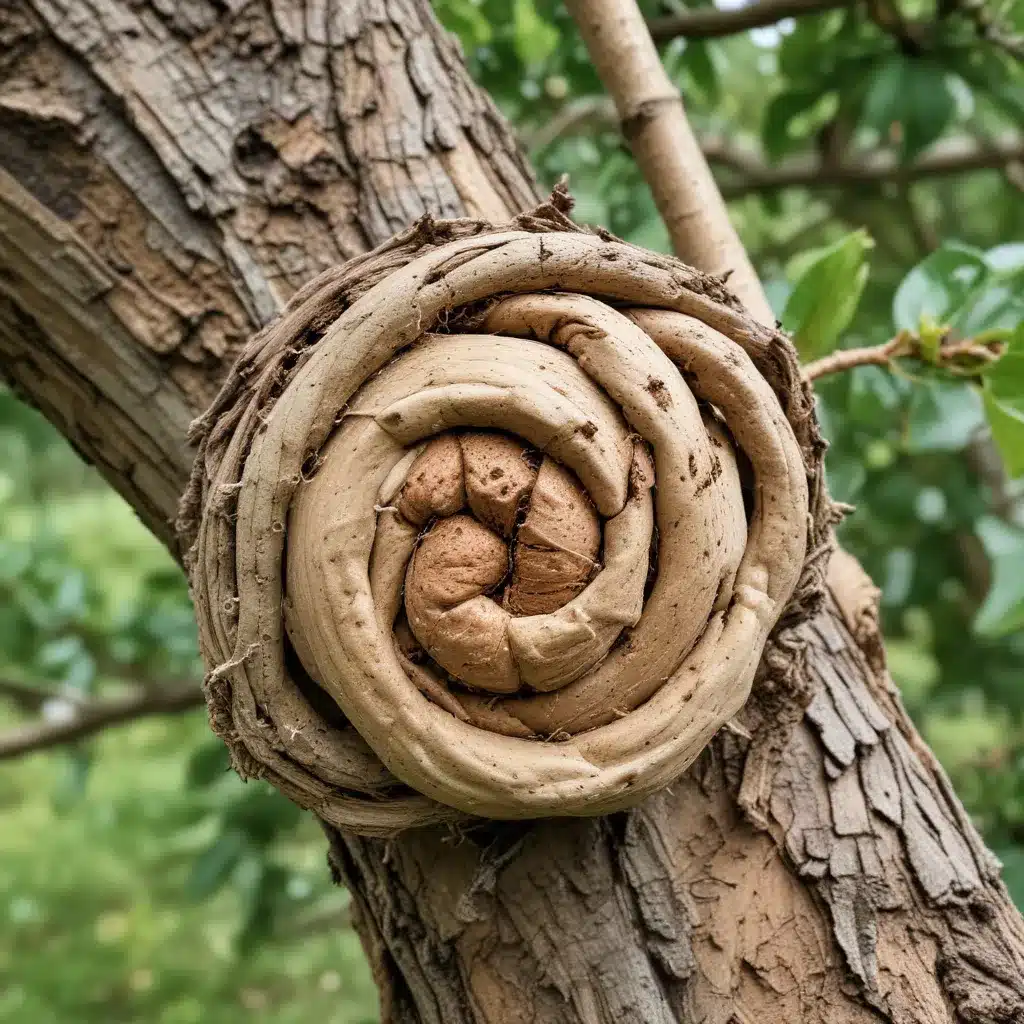
The appearance of unsightly, burr knot growths on the trunks and branches of apple trees can be a concerning sight for urban horticulturists and arborists. These peculiar, root-producing structures are more than just an aesthetic blemish – they can indicate underlying physiological and environmental issues affecting tree health. To properly manage burr knots in the landscape, it is crucial to understand their underlying causes and associated factors.
Burr Knot Formation
Burr knots, also known as burrs or burls, are a type of adventitious root formation that develops on the aerial portions of certain apple cultivars and rootstocks. These root-producing growths emerge as a result of complex interactions between the tree’s genetics, environmental conditions, and cultural practices.
Genetic Predisposition
Some apple cultivars, such as ‘Gala’ and rootstocks like M9 and M26, are genetically more prone to burr knot development. These clones have been selected for their ease of vegetative propagation, often through rooting of cuttings. This inherent ability to produce roots readily on the scion wood can manifest as a tendency to form adventitious roots above the graft union, resulting in burr knots.
Environmental Factors
Environmental conditions play a significant role in triggering burr knot formation. Factors such as high humidity, warm temperatures, and excessive shade can stimulate the development of these root-producing structures. The combination of these environmental stressors creates an environment conducive to the initiation and growth of adventitious roots on the trunk and branches.
Planting Depth and Soil Conditions
The depth at which an apple tree is planted can also contribute to burr knot development. Shallow planting, where the graft union is close to the soil line, can encourage scion rooting and the subsequent emergence of burr knots. Conversely, deep planting, with the graft union buried too deeply, can lead to other issues, such as scion rooting and crown rot.
Soil texture and drainage also influence burr knot formation. Heavy, poorly drained soils that retain excessive moisture can promote the development of these growths, while well-drained, loose soils are less likely to stimulate their emergence.
Burr Knot Characteristics
Burr knots typically appear as knobbly, irregularly shaped protrusions on the trunk or branches of affected apple trees. These growths begin as a single adventitious root initial, which then proliferates over time, forming a more substantial, tumor-like structure.
As the burr knot matures, the adventitious roots within it often remain short and stubby, giving the affected area a “knobbly” or “warty” appearance. Over time, the bark covering the burr knot may become irregular and hardened, further accentuating its distinctive visual characteristics.
Identifying Burr Knots
Recognizing burr knots can be challenging, as they can be easily mistaken for other common tree growths or abnormalities. However, a few key features can help distinguish burr knots from other conditions:
- Location: Burr knots typically develop on the trunk or primary scaffold branches, often above the graft union.
- Texture: The knobbly, irregular surface texture of a burr knot, with its stubby, root-like protrusions, is a distinctive characteristic.
- Growth Habit: Burr knots do not typically extend outward from the trunk or branches like a branch or wound wood; instead, they remain relatively confined to the affected area.
- Association with Susceptible Cultivars: Certain apple cultivars, such as ‘Gala’ and rootstocks like M9 and M26, are more prone to developing burr knots.
Impacts and Considerations
Burr knots can pose several challenges for urban apple tree management. The structural weaknesses they introduce can make affected trees more susceptible to breakage, especially during periods of high winds or heavy snow/ice loads. Additionally, the disruption of the bark and exposure of the underlying tissue can provide an entry point for pests and pathogens, such as woolly aphid and apple canker.
In some cases, large or coalescing burr knots may also impede the normal growth and development of affected branches, potentially leading to a reduction in vigor and productivity.
Managing Burr Knots
Addressing burr knots in urban apple trees requires a multifaceted approach that considers the tree’s overall health, the extent of the problem, and the specific environmental and cultural factors at play. TriCounty Tree Care recommends the following strategies:
Preventive Measures
- Avoid planting highly susceptible cultivars and rootstocks in shaded, humid, or poorly drained environments.
- Ensure proper planting depth, with the graft union positioned at least 4-6 inches above the soil line.
- Maintain well-drained soils and avoid excessive mulching around the trunk.
- Provide adequate sunlight and air circulation to minimize the environmental conditions that can trigger burr knot formation.
Monitoring and Inspection
Regularly inspect apple trees for the early signs of burr knot development, such as small protrusions or cracks in the bark. Catch issues early to prevent further proliferation and potential structural damage.
Selective Pruning
In cases where burr knots are relatively small and localized, carefully pruning the affected area may be an option. This should be done with caution, as the resulting wounds can potentially allow the entry of pests and pathogens.
Cultural Practices
In some instances, mounding soil or mulch around the trunk can help cover exposed rootstock and discourage further burr knot development. However, this approach should be used judiciously, as excessive soil or mulch can also lead to other problems, such as Phytophthora root rot.
Maintaining overall tree health through proper irrigation, fertilization, and integrated pest management is also crucial in mitigating the impacts of burr knots.
Conclusion
Burr knots in urban apple trees are a complex issue that requires a nuanced understanding of tree physiology, environmental factors, and cultural practices. By identifying susceptible cultivars, monitoring for early signs of burr knot formation, and employing preventive and corrective measures, arborists and urban horticulturists can better manage this challenging disorder and safeguard the health and longevity of apple trees in the landscape. For more information or personalized guidance, reach out to the experts at TriCounty Tree Care.


